In a managed service provider (MSP)-centric environment, managing the diverse needs of multiple end users within a single tenant environment can be challenging. However, the benefits of personalized dashboards for these end users are significant. Each end user brings unique requirements and preferences for visualizing their information technology (IT) infrastructure within this domain. This is where the multi-tenancy dashboard becomes invaluable. Using tools like BMC Helix Access Controls, MSPs can now seamlessly create personalized dashboard views for individual end users, revolutionizing how data is accessed, analyzed, and utilized within a unified framework.
We’ve had inquiries regarding the feasibility and logistics of implementing personalized dashboards within a multi-tenant environment; one resounding question echoes: “Can it truly be done?” How do you navigate the process of setting up and managing dashboards tailored to multiple end users’ individual roles and preferences?
This blog is designed to address your concerns. We will guide you through the practical application of creating and managing dashboards with distinct users. The answer to the question is a resounding “Yes, it can be done!” We will equip you with the necessary steps and insights to make this process a reality in your multi-tenant environment.
Creating a User Group
Let’s start by creating a User group. For this blog, we will create a User group for the end customer, “XYZ Manufacturing.” In the next steps, you’ll discover how easy it is to create personalized dashboards based on your end user, empowering you to tailor the experience to their unique needs.
Here is a screenshot showing the group creation. As the BMC Helix tenant administrator, you will first go into the portal:

Figure 1. Main screen.
As the administrator for the XYZ Manufacturing company, you will then click on Add group and create the specific User group. The image below shows the administrator creating TestGroup1.

Figure 2. User groups.
Now that the administrator has created a new User group, they will need to add the permissions. The administrator simply clicks on Actions -> Assigned, and assigns the User to the Group:
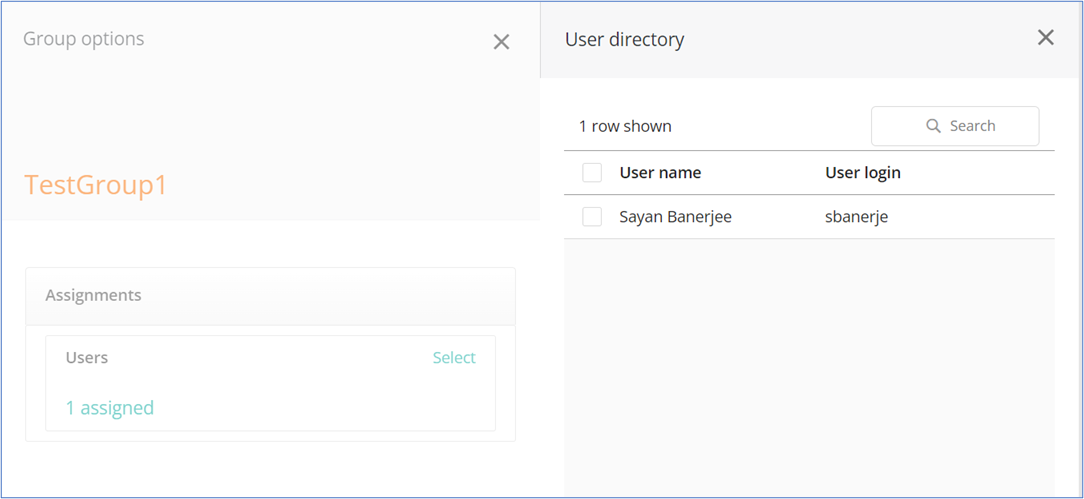
Figure 3. User directory.
Next, the administrator will want to check the User’s role. This is easily done by going to the BMC Helix portal landing page, clicking the User access tab, going to the Users and keys page, and searching for the User.

Figure 4: Users and keys.
Now that the administrator sees the User, they can simply click on Actions -> User options to see which User groups and Roles are assigned to them. By selecting either the Groups or Roles assignment area, the administrator can quickly validate that they are assigned correctly.
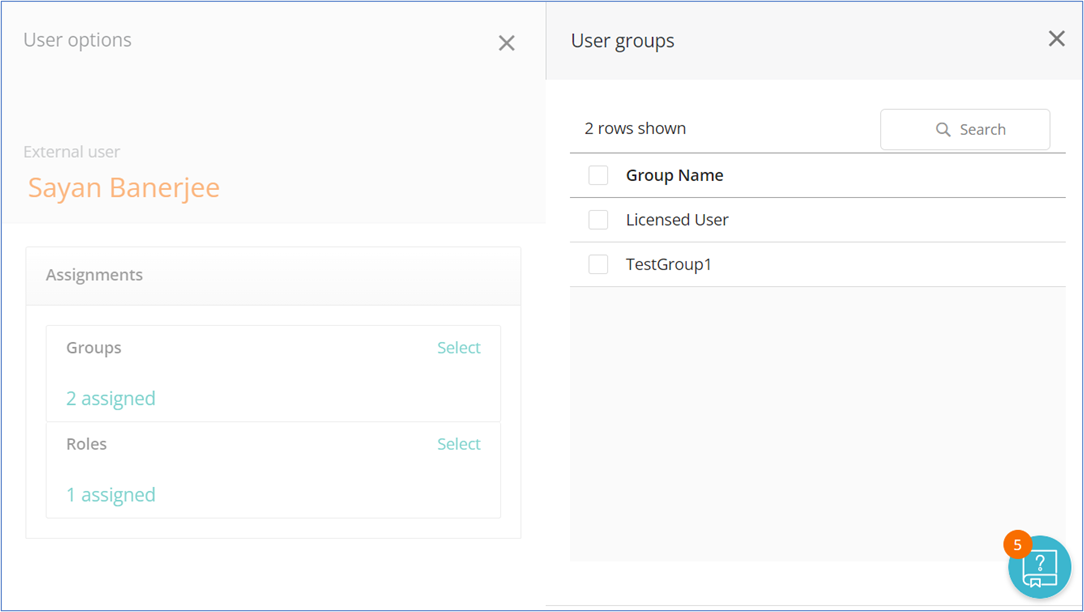
Figure 5: User options.
Creating an Authorization Profile
One of the next things you will want to do as the administrator is to create an authorization profile for this User group (TestGroup1). By creating this authorization profile, you ensure that the Users in this Group only have access to the appropriate XYZ Manufacturing company information.
Here’s how you do this: Launch the BMC Helix Operations Management console from the BMC Helix portal landing page. Then, navigate to the Administration Authorization profile, and you will see the Authorization Profile Test_AutoProf1, which we have created for User group TestGroup1. In your case, this needs to be created using the “Create” button option.

Figure 6. Authorization profiles.
The next step is to add and associate the User group we created.

Figure 7. Profile details.
In this case, we have selected Microsoft Windows Servers as the PATROL Solutions and then assigned a specific Device and Group. The Device name and Group name will vary depending on customer requirements.
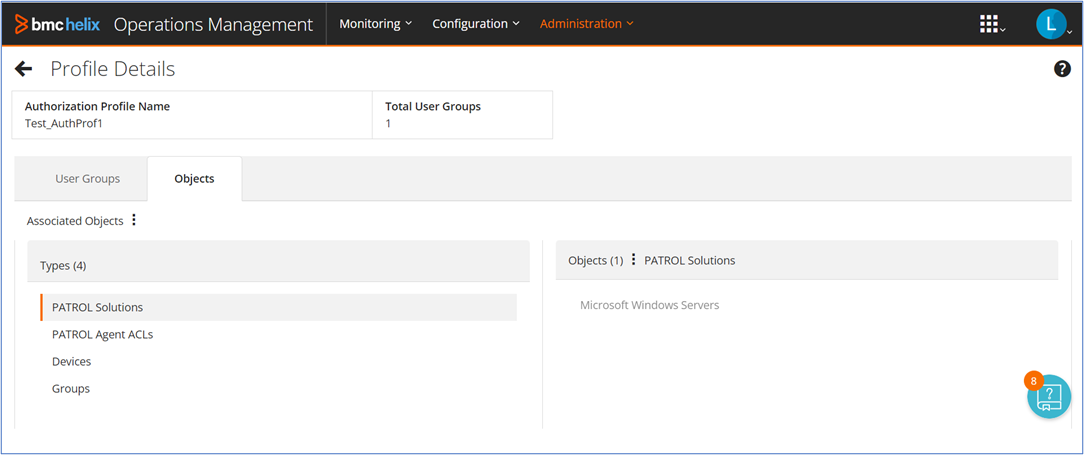
Figure 8. Administration.
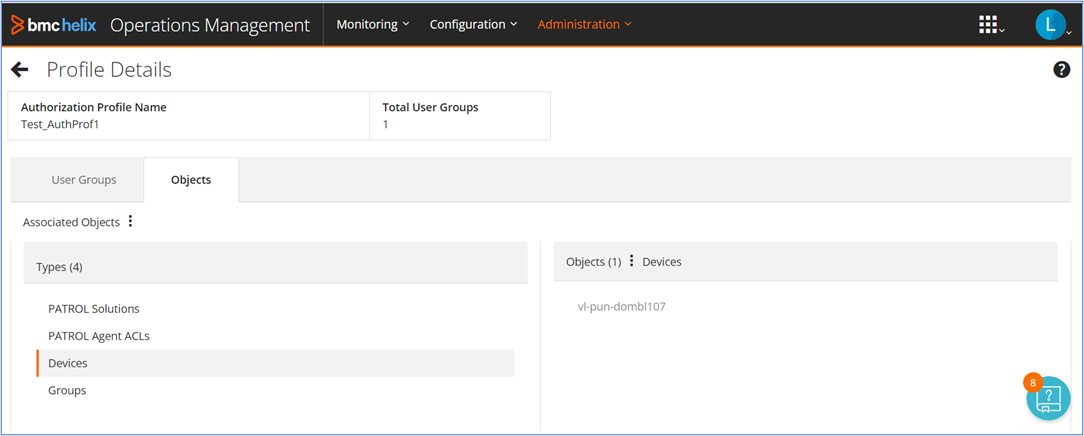
Figure 9. Administration detail.
Here we are showing the selection of the Group Windows Servers.
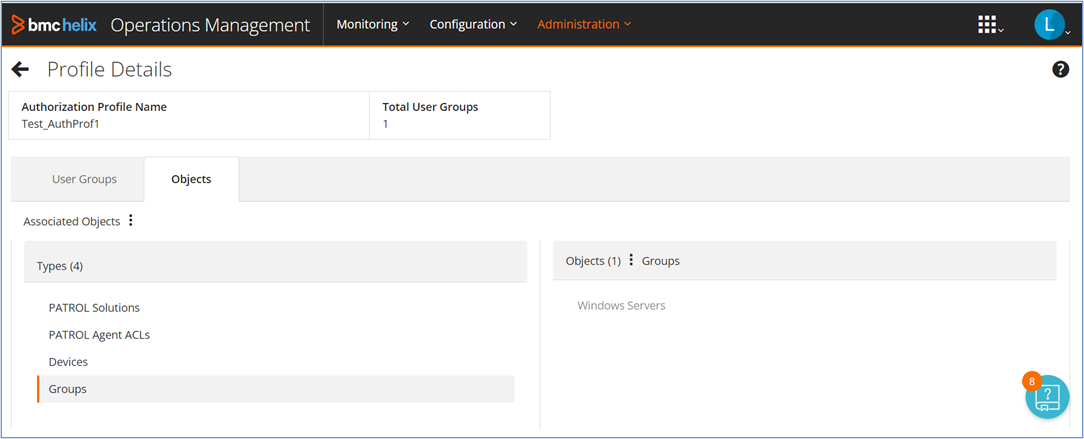
Figure 9a.Windows Servers.
Setup Complete
As you’ve seen so far, this has all been straightforward to implement. Let’s now log into the BMC Helix portal as the user and see how it shows up. Here’s the dashboard, with all the devices that the user has available to them displayed.
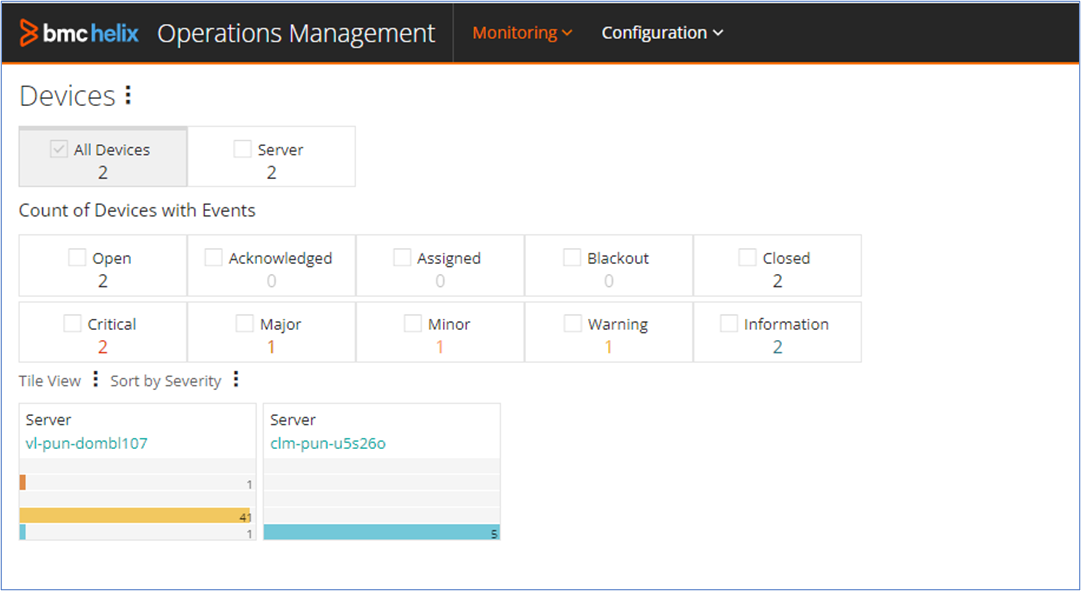
Figure 10. Main dashboard.
Based on the rules the administrator has put in place, this user can only see the two devices that were assigned.
The user can see deeper insights from the dashboard by clicking on one of the servers (for this example, we’ve clicked into the vl-pun-dombl107 server).
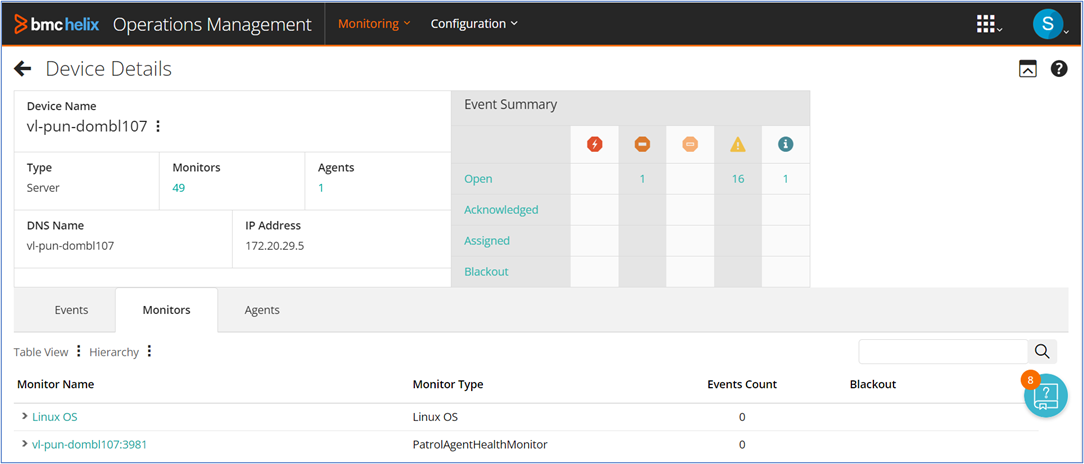
Figure 11. Deeper insights.
Once on the Device Details page, the user can click on the three dots beside the Device Name and then click on the “Launch Dashboard” pop-up to delve into all of the performance details:
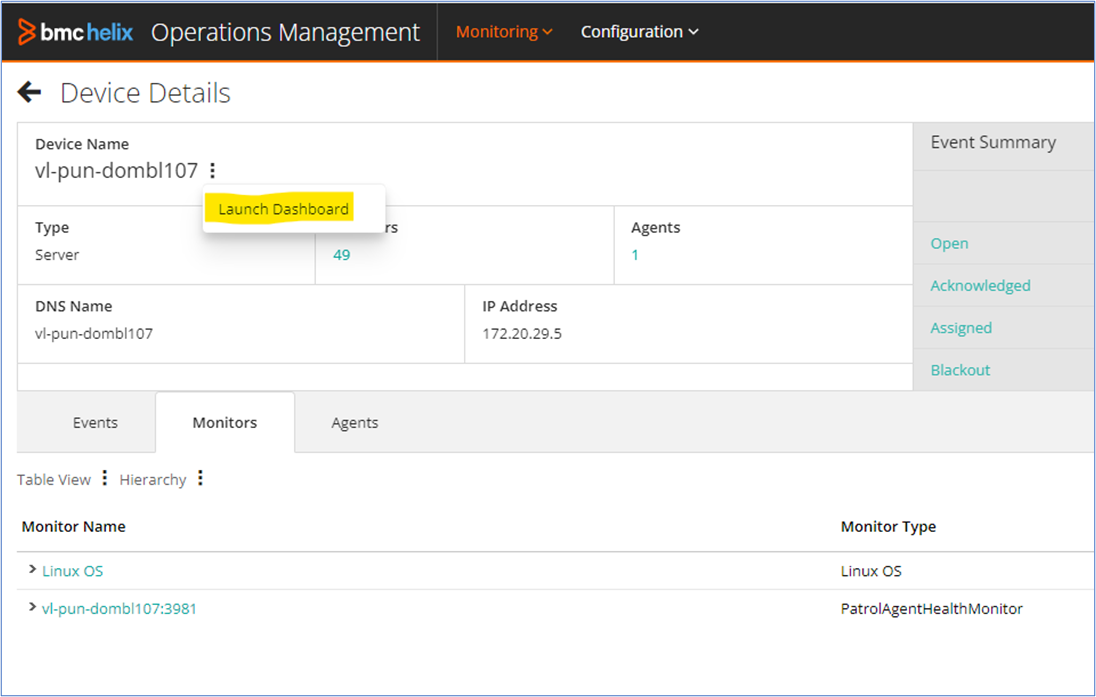
Figure 12. Launching dashboard.
Detailed Dashboard View
Once the user has clicked on Launch Dashboard, the system will default to the same device and show the CPU utilization, Memory usage, Disk usage, Network bandwidth utilization, and related events for this device.
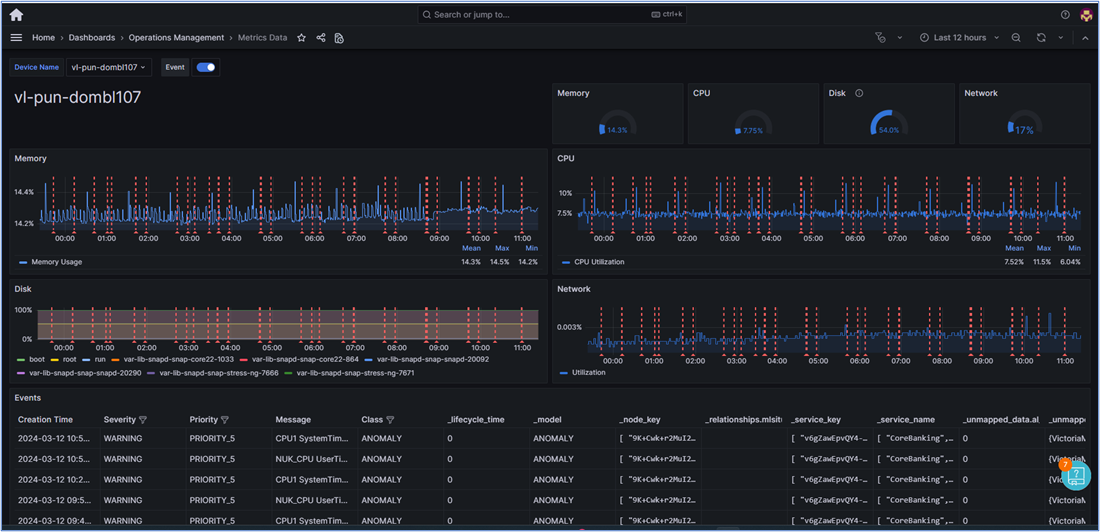
Figure 13. Performance details.
Conclusion
As you can see, creating and managing multiple end users with personalized dashboards is quite simple. Using BMC Helix User group and Authorization profiles, the administrator can easily create the views needed to support personalized dashboards based on the user profiles. We hope this process walk-through will provide you with the guidance you have been asking for as you create your dashboards in your environment.
We are also here to answer any questions you might have; please feel free to reach out to us:
These postings are my own and do not necessarily represent BMC's position, strategies, or opinion.
See an error or have a suggestion? Please let us know by emailing blogs@bmc.com.






